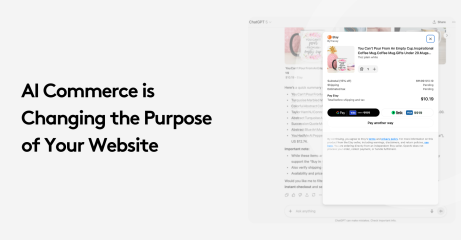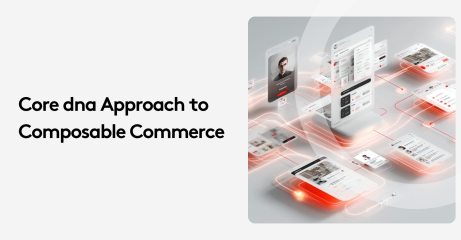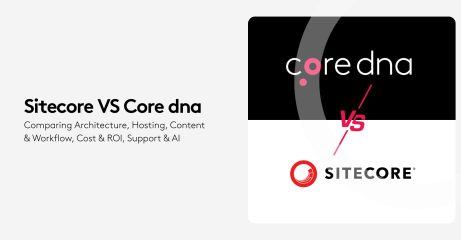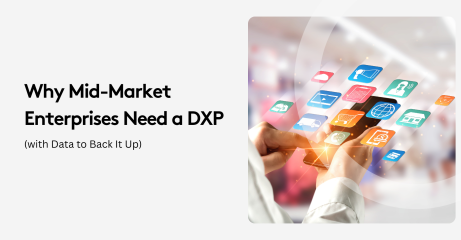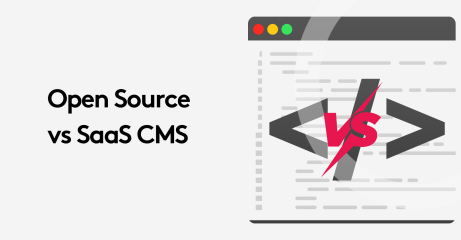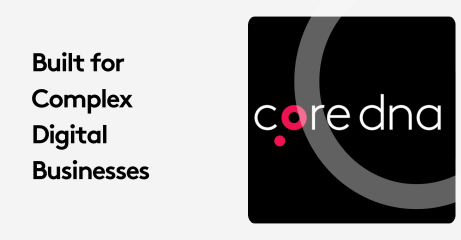How to Choose the Right eCommerce Platform for Your Business
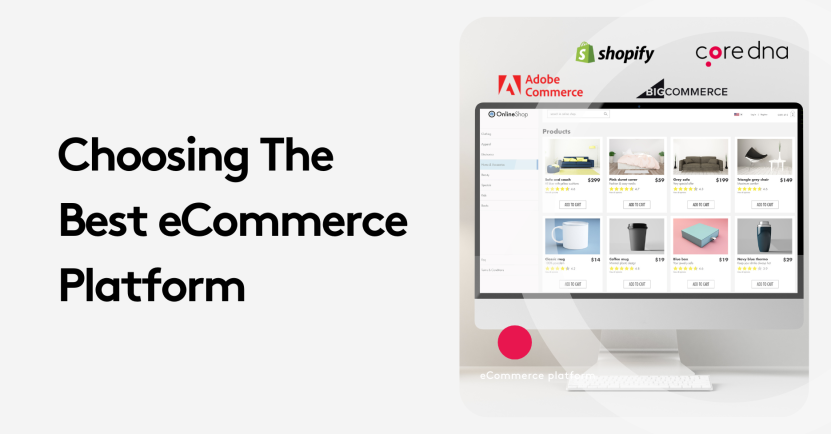
Wondering how to choose an eCommerce platform for your business? Yes it does require a lot of research and thorough comparison. Yet, there the one step that most business tend to overlook is an internal audit of technical capabilities and clear needs.
We know it seems like the most logical thing but trust us that most eCommerce implementation fail because the internal teams don't know how to operate the platform or because they decided to choose the shiny new product regardless of their actual business needs. We call this Fomo :).
In this article, we would like to help you choose the right eCommerce platform for your needs. We’ve put together this guide that details all the factors and considerations you need to keep in mind.
Let's dive in.
Key Takeaways:
- Clearly Define Your Needs First: Choosing the right platform starts with an internal assessment of your business’s unique objectives, scalability requirements, and team expertise.
- Beware Hidden and Ongoing Costs: Evaluate not just initial setup fees but ongoing expenses like maintenance, upgrades, transaction fees, and potential hidden costs that can inflate your budget over time.
- Prioritize Scalability and Flexibility: Your platform should easily scale and adapt to market changes, customer expectations (especially mobile and personalized experiences), and technological advances (like AI).
- User Experience Drives Success: The ultimate measure of an eCommerce platform’s success is how effectively it enhances customer engagement and meets user expectations through intuitive, adaptable, and personalized experiences.
Om this page:
What does "right eCommerce platform" mean for you
Choosing the right eCommerce platform for your business is more than just simply finding a platform to putting up your product listings on the web.
When it comes to selecting an eCommerce platform, you have to remember that your eCommerce site will dictate the following 4 things:
- Growth: How quickly can your business expand? A scalable platform lets you add new products, enter new markets, or handle traffic spikes without breaking a sweat—think Black Friday readiness or viral campaign surges.
- Running Costs: Beyond the initial setup, consider ongoing expenses—software licenses, hosting, developer fees, and maintenance. A cost-effective platform aligns with your budget while supporting long-term growth.
- Customer Engagement: Your platform controls how customers experience your brand. Can it deliver personalized recommendations, seamless checkouts, or multi-channel integration (like mobile apps or social marketplaces)? Engagement drives loyalty and repeat sales.
- Objectives: The right platform empowers you to achieve your vision—whether that’s streamlining operations, boosting conversions, or offering a unique customer experience tailored to your niche.
It is important for us to point out that many eCommerce vendors tend to focus on “skin” deep issues like design, UX branding and content.
But the real eCommerce issues are found within the business process, customer engagement and lead generation. All these processes can help you determine whether you’re making a healthy ROI on your software investment.
Why use an eCommerce platform?
An eCommerce platform is the backbone of an online retail enterprise, whether it is for a B2B or B2C company. Even the most traditional businesses are now moving online as there is no way around it. If you do not exist on the internet, then you will fade.
The right platform isn’t just for ecommerce and logistics, but can also help to streamline how your business interacts with your clients, customers and employees.
eCommerce platforms are essentially software applications that enable businesses to execute complex functions both in the front-end and back-end. This includes CRM, inventory management, mobile commerce, web design and warehouse fulfilment.
Before we even had specialized eCommerce solutions, businesses had to build their own platform in-house by their IT and development team. This was a laborious and costly affair.
These self-built solutions were usually unscalable, difficult to manipulate and were not able to integrate with other software solutions used by the business.
Today, the build-your-own method is used by a small minority of companies, but we now have a range of specialist solutions: Open-source eCommerce platforms, Saas eCommerce platforms and even marketplaces like Amazon and Walmart.
We’ll explore each of these eCommerce platform types later on in this guide.
So, how to determine which eCommerce platform is the right one?
When looking for the right eCommerce platform, you should first define your needs. What is good for a business may not be for another. By defining your needs and requirements, you will be able to make an informed decision.
You can checkout our eCommerce RFP template here to give you ideas on what to look for.
“The right eCommerce platform is the one that successfully delivers the outcomes and objectives that you have set; not the one that’s popular.”
These goals can be simple things like an increase in revenue, improving customer engagement or entering or creating a new market. Or they could be complex where you have many stakeholders involved that have conflicting objectives.
This is where strong leadership is required to get everyone on the same page; without it, your eCommerce project will struggle to take off.
Also, the right online store platform should fit well with the current technical expertise of your team. For example, if you select eCommerce software that is extremely popular but has a steep learning curve to get right, this will not sit well with a team who have a low technical expertise.
In this case, you will have to draft in a technical team to assist you towards your end-goal.
In today’s world, being able to pivot quickly and launch new products/lines/business models fast will help you stay ahead of your competition.
We saw it with Covid. Companies that were able to adapt and shift their business model online were able to survive the hard pandemic days.
In this case you will need a platform that can move and adjust fast without requiring an entire overhaul.
Pro tip: Understand your business goals in detail before you begin your search for a platform. Find out what is possible and what impacts that change will have on the people, clients and vendors you deal with.

What are the different types of eCommerce platforms?
When it comes to selecting the right software for the job, you have 6 different types of eCommerce platforms to choose from, as shown below.
1. Build your own
While this is more of a method than a type of eCommerce software, choosing the build-your-own route requires you to contract someone either internally or externally to develop it.
As mentioned earlier, this is less common nowadays. But if your business is very niche and has a specific set of needs and requirements that none of the commercial platforms can offer, then this might be your only option.
2. Traditional platforms
With this type of platform, you purchase a licence fee upfront, which you renew annually. Your IT team and team of developers will then build and customize on top of the platform and then install it either on-premise or into the cloud. Examples of traditional platforms include Kentico, Hybris, Oracle Commerce and IBM Digital Commerce.
3. Open source
Similar to traditional platforms where you follow the same development procedure, the main difference is that you don’t incur an upfront cost in purchasing a license. However, you do have to pay for initial development, implementation, ongoing development, upgrades and migration. An example of an open source eCommerce platform is Magento.
4. Cloud platforms
Cloud-based eCommerce platforms are online solutions hosted on remote servers that allow businesses to manage and sell products without needing on-site infrastructure. Examples include Magento Enterprise Cloud, Demandware, Salesforce Commerce and Volusion.
5. SaaS platforms
SaaS eCommerce platforms are generally built on a single codebase. Everyone who utilizes that platform experiences the same technology for a fixed monthly fee that covers server use, maintenance, security and upgrades.
6. Headless commerce
A headless commerce platform separates the front end (the part that your customers see) from the back end (the admin and functionality part). This makes it much more customizable, scalable, and personalizable.
What headless commerce brings to the eCommerce game is total channel design freedom. This means if you have large developer resources then you can create tailored customer experience for each channel your business uses. From in-store kiosks to mobile apps, and websites.
This is a great choice for unique businesses or businesses who want to build different experiences.
The rise of mobile eCommerce platforms
But it’s not just the cloud that’s becoming important. Today’s shoppers are much more likely to buy directly from their mobile (and no, that doesn’t mean they want another app).
As a result, businesses need to meet this demand with responsive mobile eCommerce platforms. Customers don’t just expect this — they desert businesses that don’t have this, and 59% of shoppers admit that being able to buy on mobile is a decision that drives them.
Okay, so what can your eCommerce platform do about it? Make sure you find a platform that accommodates mobile design, and work with your vendor to implement it.
Our pro tip? Plan for mobile first, not desktop first. That way, your platform will be future proofed.
Future trends: AI & increased personalization
You won’t be surprised to hear that AI is also bursting onto the scene in the ecom world, either. Even though AI chatbots, personalized experiences, and AI email campaigns have only recently been developed, they’re already things that your customers expect to see online.
Because AI doesn’t just impact the shopping experience, it also boosts conversions. Personalized eCommerce features, campaigns, and more are now standard, and so businesses that don’t utilize AI strategically are left behind.
This is why it’s vital to choose an eCommerce platform that can support AI as it changes. Choosing something that is expensive to change and adapt (like a build-your-own 100% customizable solution) will cause problems later down the road, as you'll have to constantly configure and reconfigure to accommodate new technologies.
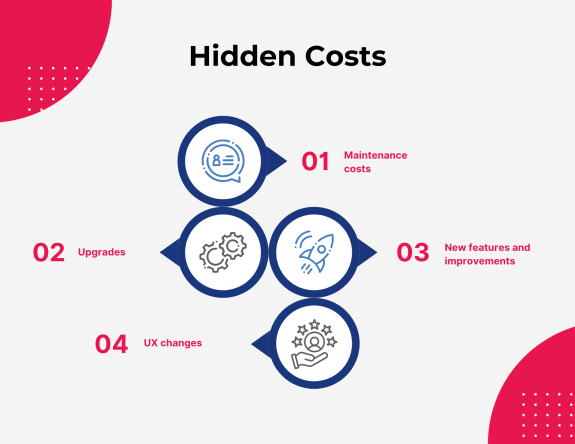
A breakdown of eCommerce platform costs
In deciding on a digital commerce solution, a lot of people tend to underestimate the actual eCommerce platform costs.
While the initial build and development costs are obvious, there are other costs you need to keep in mind. Let’s take a look.
1. Maintenance costs
The maintenance costs for your eCommerce site can change based on its size and complexity. If you choose a traditional or open-source platform, you must handle maintenance. This ensures your eCommerce site meets its needs.
With SaaS platforms, maintenance is included your subscription fee.
2. Upgrading costs
Open source platforms, in particular, require you to download and install updates whenever they are released. If you don’t install these updates in time, then your platform is at risk to hackers and cyber attacks.
Installing these updates does require some level of technical knowledge, so again, you will need to hire outside help. With SaaS platforms, just like maintenance, any updates are covered in the monthly fee.
3. Adding new eCommerce features/improvement costs
Consumer behavior changes over time. Make sure your site stays relevant by making improvements and adding new features. If you don’t have an easily customizable solution, you’ll find this is where the eCommerce platform costs really add up.
4. UX changes costs
Changes in consumer trends and behavior might require more complex UX updates. If your current eCommerce becomes too rigid, then you might have to replatform into another system that allows you to make these UX changes— which can be costly.
5. Hidden fees
Be careful of sneaky platforms that ramp up fees once you’re on their platform. This could be bandwidth charges, support costs, third-party provider costs, or scalability costs (where fees are tacked on if you exceed limits like bandwidth, traffic, or more). These can be costly, and can appear out of nowhere, so make sure you understand the platform’s pricing model before you commit.
6. Transaction fees
Finally, transaction fees are another cost of doing business on an ecommerce platform. Don't be tricked with low installation fees. Look out for transaction fees and ensure that you understand the costs of using your platform even as your business grows
What factors should you consider when selecting an eCommerce solution?
Besides looking at development and operating, there are other factors that you need to consider when selecting your eCommerce software. Let’s look at some here.
1. Vendor experience and expertise
Check to see if the vendor actually has the experience and the technical skill set in meeting the needs and complexities of your requirements, and experience of working with your industry.
Take the time to research case studies, customer reviews and forums to see if the vendor is well equipped to handle more than just development.
2. Support
When things go wrong, will the vendor provide you with the necessary support to help you resolve the problem or issue?
Always look out for vendors that provide 24-hour emergency support and can be contacted through different channels including email, web chat and by phone. Plus, choosing a secure eCommerce platform from the beginning will minimize the time you might need to spend chasing support.
3. Scalability
As your business grows, will your eCommerce software grow with you? A scalable eCommerce platform is the central hub of your business. A platform that is difficult to scale can hinder the growth of your business.
[CTA: Read this next: Scalable Web Architecture: How We Handled a 1031% Surge in Traffic [A Case Study]
4. SEO-friendliness
Seo is not just for content, is a big driver for eCommerce organic traffic too. Choosing an eCommerce Platform that has built in SEO features can give you a competitive edge.
Some of the things to look for when considering an SEO-friendly eCommerce platform are:
A robust CMS that supports all types of content
Using your own domain name
Allowing customers to leave reviews
5. Mobile-friendliness
Mobile commerce is becoming the number one revenue driver for ecommerce. As Statista predicts mobile sales will represent 62% of all online purchases by 2027. Making sure your ecommerce platform supports mobile and can scale to mobile apps or PWA is non-negotiable.
6. Security
Perhaps the most important thing to consider is security. A secure eCommerce platform means customer trust when it comes to financial payments and storing their data, and choosing a provider for their security will prevent major reputation losses down the line.
7. The most important factor? The client experience
How you deliver your client experience will influence the success of your eCommerce initiative. One critical factor that determines client experience is the user experience (UX) of your platform.
A platform that is user-friendly and intuitive can improve user-satisfaction and help your team achieve their objectives. This is why it is crucial to know if a UX of your platform reflects your company needs.
But besides the user-friendliness, client experience nowadays also heavily relies on the flexibility and adaptability of a platform. Nowadays, with AI, customers expect technological aids, like chatbots, personalized content, and bespoke shopping experiences. eCommerce platforms must readily adapt to these changes and innovations, but do so without causing a headache to your team.
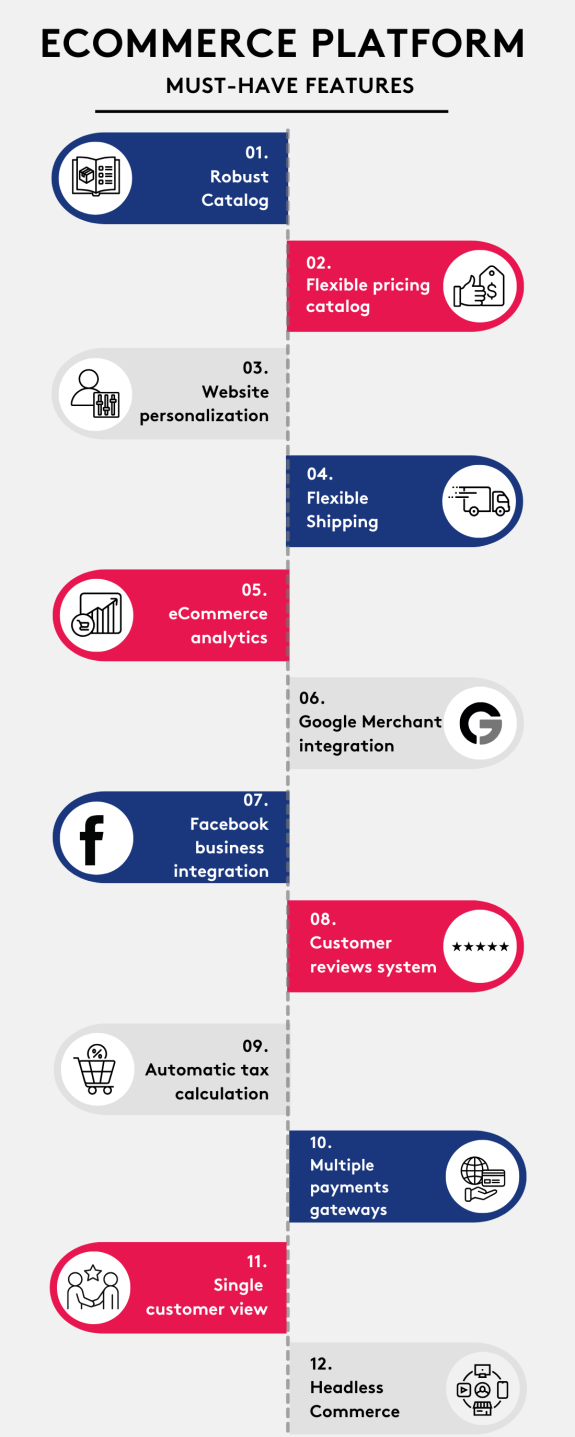
12 must-have eCommerce features
Every platform has their own set of unique eCommerce features and functions. When you’re selecting a digital commerce solution, look out for the following features recommended by our experts.
1. Robust catalog capabilities
Your product catalog represents the heart of your inventory. Making sure your eCommerce platform can integrate with your warehouse, inventory management system and ERP is essential to make sure you data is always up to date on all fronts.
Out of the box solution may seem appealing for a straightforward online store. More complex eCommerce stores need a platform with customization options.
ClarkRubber is a franchise business in Australia needed to combine the inventory of 60 different stores. Core dna helped them create a robust online store managed form one dashboard. Read about how they operate online here.
2. Flexible pricing
You’ll want to easily run promotions, sales or discounts—but that’s not all. Support for multiple currencies is another consideration, while you may also want to charge different fees for different geographical locations or product configurations.
3. Website personalization
AI has brought a new level of possibilities when it comes to personalizing online customer journeys. An API-first eCommerce platform means you will be able to integrate with any tool you would like to enhance your customers experience and increase conversions.
4. Flexible shipping
Shipment demands have changed drastically in recent years. Now, customers want things to be delivered on the day of purchase or the next day. Ensure the platform is well-supported by a decent distribution and logistics company.
Core dna, for example, supports zone-based shipping rules, and also allows for integration with fulfillment companies.
5. eCommerce analytics
You should track some vital eCommerce metrics and KPIs for your eCommerce store. A built-in analytics system is the perfect way to do that. Most digital commerce solutions have their own analytic platforms.
For eCommerce solution that don't offer analytics, you should be able to integrate with 3rd party analytics tools. ( Google analythics. BI etc)
6. Google Merchant integration
Google Merchant allows businesses to upload and maintain product information so it can be displayed in the relevant Google Shopping results. It helps to drive more traffic to your product listing page. Having this feature is hugely beneficial to reach customers beyond the borders of your website.
7. Social Media Integration
Social commerce is becoming a big part of selling online. Integrating your Online store with your social selling will allow you to always have up-to-date inventory and data. Your eCommerce platform should allow you to centrally manage your product catalog while managing multiple channels.
8. Customer review system
Built-in customer review systems or/and integrations with review solutions help you leverage social proof to increase conversions.
Positive reviews increase trust for 72 percent of consumers and are crucial in eCommerce product pages.
9. Automatic tax and account calculation
If you’re a global eCommerce business, then you need to abide by tax laws of different countries alongside their currency requirement. Can your platform support this?
10. Multiple payment gateways
Having multiple payment options increases conversion. Plus, if you’re planning to grow your eCommerce store internationally, you’ll want to use local payment gateways to gain the trust and custom of local markets. Make sure to choose a secure eCommerce platform that can handle this.
11. Single customer view
Track your customers and their communication across every channel plus their buying data. Then, you can use this to deliver personalized buying experiences.
12. Extensive content management
In a world where AI generated content is dominating the SERPs, brands that embrace storytelling and diverse content will perform better. Having an SEO-friendly eCommerce platform that supports different types of content is vital.
Four scalable eCommerce platforms ranked
So, now we’ve broken down what goes into a decision like this. It’s time to look at the top 4 ecommerce solutions on the market.
Customizable enterprise eCommerce: Core dna
Core dna brings your online business to life. It’s a fully integrated solution with an advanced hybrid CMS and eCommerce solutions. It is designed to bring all the different aspects of your business together so you can manage it all from one central location.
It can support the most complex requirements, like multi-warehouse management, subscription models, and personalized customer experiences.
Randys worldwide has trusted Core dna to power their online presence. You can read about it here.
User-friendly: Shopify
A popular, easy solution, Shopify is known for its easy-to-use interface. And it is easy to use, with apps and themes that can help it fit into any kind of business.
However, if you’re looking for the more advanced eCommerce platform features, then you should look elsewhere. Shopify’s app-based model means that the costs of your new eCommerce platform can quickly add up for more complex features. And be aware that transaction fees may apply, that could eat into your margins.
Robust features: BigCommerce
For high-vol sellers, Bigcommerce can be a good choice because there are no transaction fees, and it’s a scalable, SEO-friendly platform.
However, it’s a bit complex to get your head around. Lengthy customization and build times make Bigcommerce a clunky solution for smaller businesses or growing online stores.
Enterprise platform: Adobe Commerce
Finally, Adobe Commerce ( aka Magento) is a great choice for enterprise businesses because of its significant customization options and scalability. It supports personalization for individual customers (which is great for businesses that need this functionality to run campaigns) and it also integrates well with other Adobe products.
However, once again, it’s difficult to build and scale. Certainly not for amateurs, you can expect to pay high costs for specific developers with appropriate technical expertise, and expect significant delays in customization (a challenge when you have to move fast).
Choosing the right eCommerce platform for the future
Ultimately, the choice of how to choose the right eCommerce platform is a tough one, and it deserves significant thought.
But the bottom line is that your solution needs to fit your business. It must be customizable, personalizable, buildable.
It should be accessible, with low costs, and an easy learning curve that your team can get to grips with quickly. It should be future-proof, with elements that adapt to AI, mobile-first shopping, and technical advancements that we don’t yet know of.







